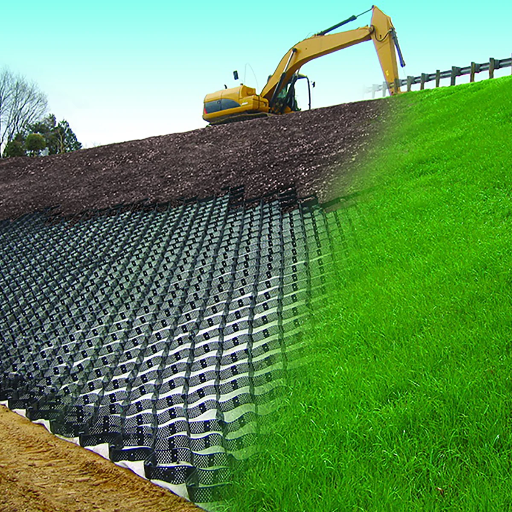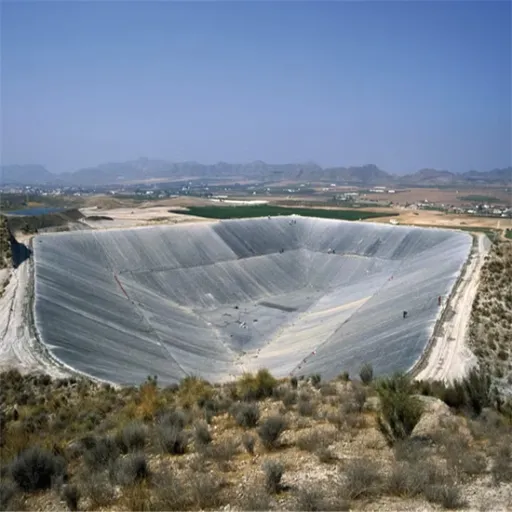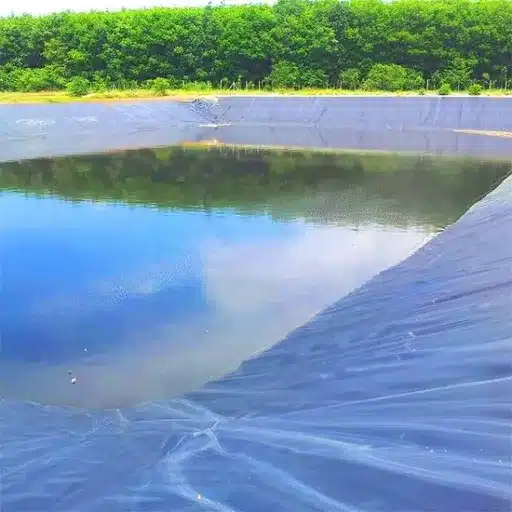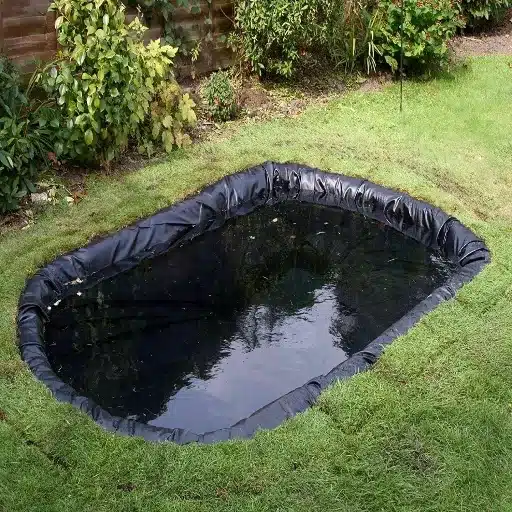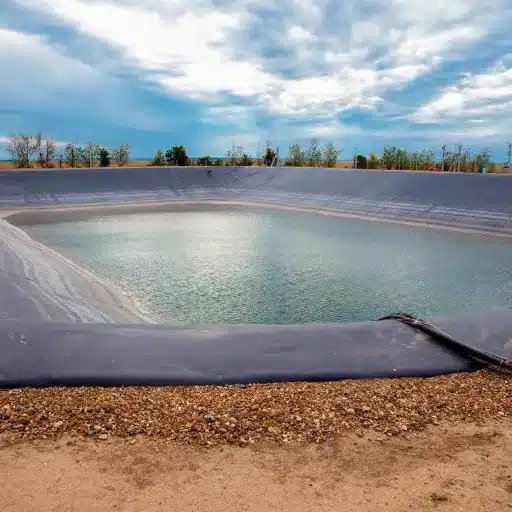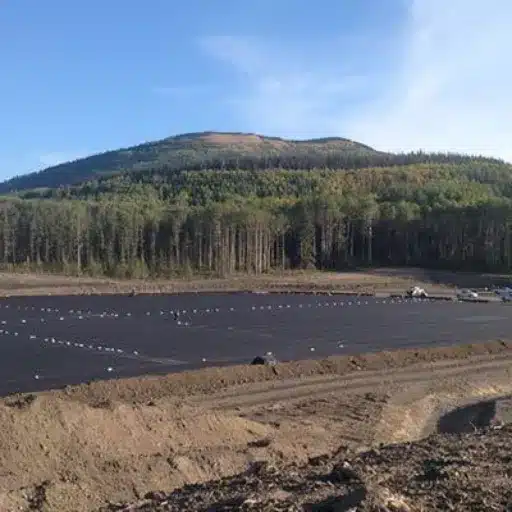Soil stabilization and channel protection are issues important to infrastructure, environmental conservation, and maintaining the ecological balance. Enter Geoweb – an advanced technology that transformed the task that engineers and environmentalists had used to solve before. Marrying creativity with practicality, Geoweb systems impart sustainable solutions for erosion control, load support, and slope stability, guaranteeing long-term performance under an assortment of scenarios. In this blog, we will look into the construction of Geoweb technology, the plethora of its applications, and the advantages it confers upon modern construction and environmental management. If in search of methods capable of resolving soil-related and channel-related problems, read ahead to find how Geoweb is becoming the lens through which these crucial issues will be viewed.
Indicating What Geoweb Is
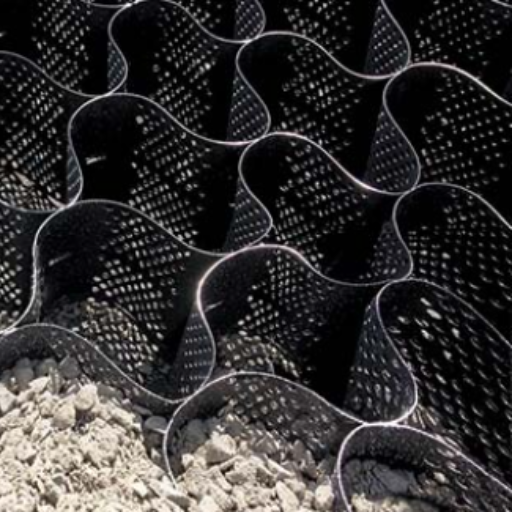
A Geoweb is a cell-confinement system made from durable materials used in stabilizing soil and providing structural support. It has interconnected cells forming a flexible, three-dimensional grid that confines and reinforces materials such as soil, sand, or gravel to prevent erosion and improve load distribution. Construction and environmental projects extensively employ Geoweb for such purposes as slope protection, retaining walls, and channel reinforcement.
Geoweb: Definition and Characterization
The Geoweb cellular confinement system is a cutting-edge technology for solving a number of geotechnical problems arising from its unusual form and function. At the base of its design are interlinked high-density polyethylene strips that form a flexible and tough 3-D honeycomb grid to confine and stabilize fill materials such as soil, sand, or aggregate to improve their performance in a wide range of applications.
Key Features of Geoweb
High Load Distribution
The Geoweb system redistributes applied loads, reduced stresses on materials below; thus, for instance, application in pavements for load support reduces thickness of structural layers.
Erosion Control
By confining infill materials while minimizing runoff of water on top, the Geoweb system provides excellent erosion control for slopes, riverbanks, and channels; soil is rarely displaced even under harsh environmental settings, maintaining stability over extended time.
Durability
Made of high-density polyethylene, Geoweb is resistant to chemicals, resistant to degradation from UV, and resistant to weathering. This ensures a long life even in difficult environmental conditions.
Lightweight and Flexible
Light in weight, the system is easy to transport and required minimum equipment so enabling faster construction. Its flexibility permits it to adapt to variable terrain and site conditions.
Environmentally Friendly
Geoweb is environmentally friendly as this will reduce extensive grading, minimize the use of materials, and also allow vegetation as a feature of its design so that it will blend into the natural landscape.
The Performance and Benefits of the System
Load Strengthening: Studies claim that Geoweb systems can reduce base-course thickness by as much as 50%, thereby saving money and materials.
Prevention of Erosion: Independent tests have proved the reduction of soil loss above 97% when Geoweb is applied on slopes with runoff.
Longevity: Using HDPE for Geoweb gives a service life of 75 years, even under severe conditions.
Adaptability: Geoweb operates on any soil type while allowing various infills, including natural and recycled materials, thereby making it suitable for a wide range of applications.
Essentially, Geoweb forms a stand-alone solution, providing structural strength with sustainability for the modern construction and environmental projects. Hence, it is this flexibility and proven track record that owing to which engineers and project managers around the world put their confidence in it.
Importance of Geoweb in Modern Applications
Among any modern construction endeavor, the Geoweb system has to be included for its ingenuity and versatility that it brings to the table. By utilizing the 3D cellular confinement technology, it stabilizes the soil for some sustainable construction solutions. Recent industry data shows that the Geoweb system can reduce the fill material required by 50% in road construction, thus reducing construction costs and environmental impacts.
Geoweb has also been serenely applied in erosion control. The retention rate for stabilized slopes and channels is more than 90%, demolishing that erosion rate. This also protects against the degradation of the environment and enhances the durability of critical infrastructure. Lower maintenance requirements are reported for infrastructure projects implementing Geoweb technology that has the capacity of lasting 25 years more compared to traditional methods.
The adaptability of the Geoweb system creates supremacy in sustainable practices owing to its compatibility with sustainable infill materials. From supporting steep slopes to stabilizing unpaved roads in the hinterlands, it has been providing outstanding performance in several industries, including transportation, mining, and renewable energy projects.
Introduction to Geocells and How They Function in Geoweb
Geocells, which are also called cellular confinement systems, are three-dimensional honeycomb-like frameworks extruded from compound high-density polyethylene (HDPE) or alike. Their primary aim is to enhance load distribution and bearing capacity of the soil or aggregate and other infill materials. By confining the material laterally, the geocell system checks erosion and significantly augments structural integrity, especially in modern Geoweb applications.
Geocells constitute a backbone in Geoweb applications wherein these bounds are subjected to punishing site conditions. Developments in geocell design have improved tensile strength, durability, and resistance to harsh environments. For instance, recent studies have demonstrated that geocells can increase soil bearing capacity up to five times while concurrently reducing total construction cost by 30-50%. These figures underscore the ability of geocells to substantially curtail materials and labor while maximizing infrastructure solutions’ life expectancy.
Another important advantage of geocells is their support for sustainability when coupled with green infills, such as recycled aggregates or native plant-based infill. For example, slope stabilization application with vegetation-supported geocells gives a 25% improvement in water management efficiency by reducing surface runoff and soil erosion.
The related versatility of geocells makes them appropriate for all manner of applications. They are employed widely in roadway reinforcement to contend with soft subgrades and vicious traffic loads; in mining, for haul road and containment pond stabilization; and in renewable energy, for foundation support to remote solar farms. Together, geocells guarantee cheap, durable, and green solutions, truly enshrining their status as one of the mainstays of the Geoweb technology.
Geoweb® Geocells in Applications
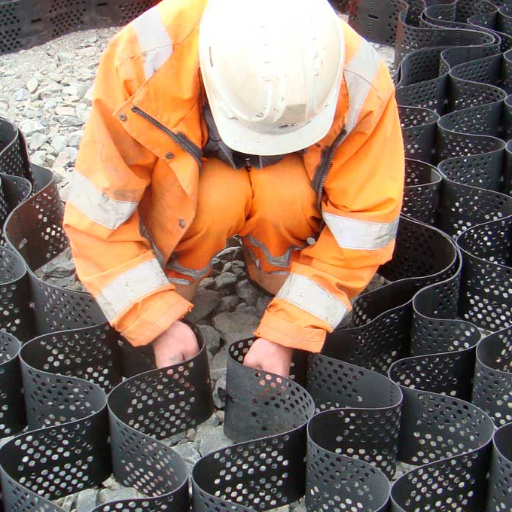
I would say that Geoweb® Geocells find usage in an array of sectors such as in road construction for the reinforcement of soft subgrades, in mining for haul roads stabilization, and renewable energy fields for supporting solar farm foundations. These represent cheap, cost-effective, and durable options that are also environmentally friendly.
The Soil Stabilization Techniques
Geoweb® Geocells provide advanced soil stabilization techniques that confine and distribute loads over a wider area, thereby reducing stress on the subgrade layers. Their three-dimensional honeycomb structure provides the much-needed stabilization even in terrains like slopes and soft soils. Studies have proven that Geocells can increase bearing capacity by up to 50%, thereby bringing a considerable reduction in construction project costs. For road construction, the use of Geocells was proven to cut down the required thickness of aggregate layers by 30-50%, thus significantly reducing material costs; further than this, such material costs were kicked down due to the reduced amount of carbon emissions ensuing from transportation.
Moreover, the newer applications of Geoweb® Geocells in renewable energy projects further indicate the versatility of Geoweb® Geocells. They are being used increasingly for the support of solar farm foundations, wherein the Geoweb bases provide sturdy yet environmentally friendly support for photovoltaic panels even in areas where the subsoils are weak. It is reported that such implementations for solar farm sites increase the overall stability and efficiency of the site by about 20-30%.
It appears that Geoweb® Geocells is the key to the durability of modern constructions but strengthens by sustainability that is the growing concern in engineering today.
Channel Protection Solutions
Channel protection is an important element in sustainable water management that aims to guarantee the stability and functionality of waterways against erosion and extreme flow conditions. Geoweb® Geocells are being increasingly adopted for channel protection because they offer resistance to erosive forces while reinforcing the soils lying within waterway channels and drainage.
Recent studies have shown that the use of Geocells for channel stabilization can reduce erosion by up to 50% compared to conventional methods. These cellular confinement systems increase shear strength and reduce sedimentation while promoting vegetation growth to further stabilize the structure and restore the ecosystem. Furthermore, Geocells can be used on steep channel slopes, enabling more effective land use and water flow control.
Reports from projects applying Geoweb® Geocells have reflected cost saving and increase in the lifetime of the structures by at least 30% in reduced manual maintenance. This innovative stabilization method supports sound green practices, thereby making it a favorite among engineers in direct water flow and soil retention challenges.
Managing Slopes and Preventing Erosion
Geoweb® Geocells have been found to be an effective solution for managing slopes and preventing erosion, more so in hostile environmental conditions. Geotechnical engineering technology enables these cellular confinement systems to bring about more uniform stress distribution leading to better soil stability. Recent data reveal that Geoweb® Geocell systems improve the durability of slopes by up to 50%, thus minimizing associated risks such as landslides and erosion. Moreover, studies also indicate that installation of these cellular systems curtails soil displacement by almost 70% through trapping granular materials inside the cellular framework on steep slopes; thereby fostering vegetation growth by preserving soil qualities, providing environmental-friendly and aesthetic erosion control.
Costwise, Geoweb® Geocells perform better with respect to traditional slope protection methods. Some reports have revealed that use of Geoweb® Geocells can cut 20%-30% of the project cost mainly in terms of material and maintenance. These features make it useful for industries like infrastructure, mining, and agriculture, where preventing erosion greatly contributes to operational efficiency and environmentally friendly standards. All these qualities stand to make Geoweb® Geocells an advanced technology in slope management.
Impact of Geoweb on Various Industries
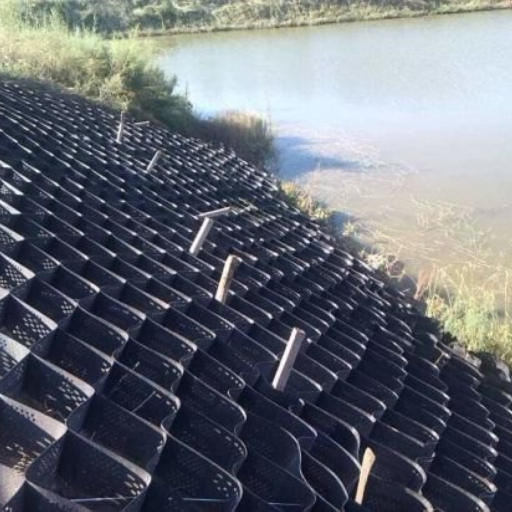
Geoweb Geocells play an important role in the industry, providing mechanisms for slope stabilization, reduction of material and maintenance costs, and ensuring compliance with environmental standards. Erosion control is of primary importance to infrastructure, mining, and agriculture industries to work efficiently and sustainably.
Construction and Civil Engineering
Geoweb Geocells provide a novel solution to problems in construction and civil engineering. They stabilize soils and distribute loads, thereby making soils safer for constructing roads, retaining walls, and bridges. According to recent literature, with Geoweb systems, material placement and the consequent cost of construction can be reduced by as much as half. In another study, it was found that Geoweb Geocell systems provide at least 3 times the soil bearing capacity compared to soil without any stabilization thereby minimizing structural failures.
The use of Geoweb Geocells for slope protection reduces erosion by trapping the infill materials while allowing vegetation to establish, making them well suited to environmentally sensitive areas. Research indicates, for example, that slopes treated with Geoweb systems can resist irradiation from rainfall intensity in excess of 100 mm/hr without serious structural degradation. This data supports their maintenance reduction ability and their benefits in improving construction resiliency.
Agriculture and Land Management
Geoweb Geocells offer very beneficial solutions to agricultural land management for soil stabilization and erosion control. By means of a structured cellular confinement system, they retain soil and water, crucial for crop production in drought-prone or high-rainfall areas. Recent studies indicate Geocells increase water retention in agricultural lands by up to 40%, thus hydrating crops better and reducing irrigation need. Another benefit of these systems is that they reduce soil erosion on average by 85% on slopes or in areas prone to high flow, ensuring the long-standing fertility of agricultural lands.
These systems are very helpful in land degradation management, which affects more than 20 percent of the world’s agricultural areas, according to the most current reports. In adverse environmental conditions, Geoweb Geocell systems shall work a lot to improve soil structure and allow sustainable farming to be practiced. A factor of the modern agricultural and land management methods will be these systems because of their durability and environmental friendliness, which benefits and supports long-term sustainability and productivity.
Conservation and Environmental Protection
According to recent data, soil restoration and environmental protection are critical needs in this area. About 33% of soils worldwide are degraded due to deforestation, overgrazing, urbanization, and unsustainable agricultural practices, according to the Food and Agriculture Organization (FAO). Responding to this need requires the greater deployment of solutions such as Geoweb Geocells. They increase erosion resistance by up to 75%, improve water retention capacity by stabilizing and structuring the soil matrix, and simultaneously reduce the demand for traditional construction materials such as concrete and asphalt by a staggering 50%, thus setting a reduced environmental footprint.
An example is found in areas where desertification poses a great threat, where Geocells have been employed to stabilize dunes and aid in reforestation. Furthermore, several peer-reviewed papers demonstrate that these techniques can boost crop yields by 20% in even degraded environments when integrated within agricultural systems. These benefits provide a link to Food Security and the global sustainability agenda, including the United Nations Sustainable Development Goal 15, which emphasizes the protection, restoration, and promotion of the sustainable use of terrestrial ecosystems.
Emerging Trends in Geoweb Technology
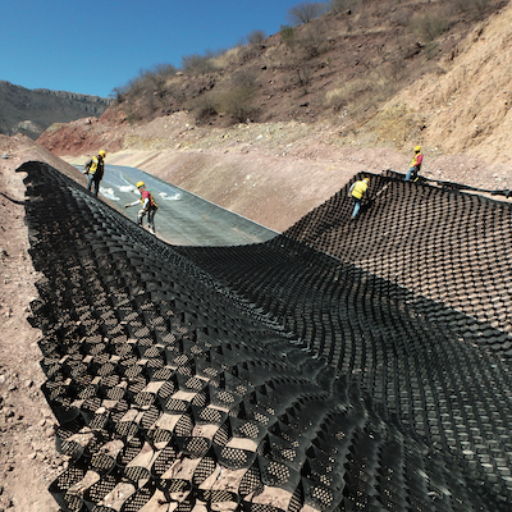
The answer lies in utilizing geoweb technology to fight the environmental and agricultural challenges effectively. The integration of these technologies will surely enhance crop productivity, reclaim degraded lands, and help achieve global sustainability goals such as those in United Nations Sustainable Development Goal 15.
Advancements in Geocell Design
Being an advanced variant of cellular confinement systems, geocell has undergone major innovations over the last few years to enhance soil stabilization, erosion control, and load distribution. The latest design concepts employ high-density polyethylene (HDPE) or new polymeric alloys to impart high flexibility or durability in different environments. For instance, perforated geocells have been a recent design advancement and they enhance drainage and root penetration aiding vegetation growth in erosion areas.
Research shows that geocells reduce the thickness of the base layer in road construction up to 50%, which results in saving raw materials and reduces environmental impact. According to a Journal of Geotechnical Engineering article in 2023, the application of geocells in road construction improves load support capacity by 25% when compared to conventional methods, ensuring long-term durability of infrastructure under extremely heavy traffic loads. These geocells, more importantly, are also used in slope stabilization to reduce landslide risks in vulnerable areas due to natural calamities.
Together with data-driven geoweb systems, these innovations add value to design methods. Integration of the tools in a geospatial manner allows for real-time monitoring and optimization of deployment strategies for the best results. These developments are a stark example of how new technologies and new materials bring about a change in the applications of geocell to meet modern demands of environmental and engineering issues.
Future Geoweb Solutions for Sustainable Development
With their presence felt more than ever now, modern geoweb solutions continue to support sustainable development along all lines. Since geocells are made of high-density polyethylene (HDPE) materials and with great ingenuity, they also form the best structural support to prevent soil erosion and to reinforce infrastructure in environmentally sensitive areas, which have a direct bearing upon road development. For example, recent data shows geocell reinforced roads have the potential of increasing the life-span of unpaved road by as much as 300% because it evenly distributes loads and reduces surface degradation.
Geoweb systems are further vital in controlling stormwater. The U.S. Environmental Protection Agency (EPA), in a recent report, indicated that use of such technologies in urban design can improve infiltration on runoff by 60%, plummeting the risk of flooding in urbanized settings. This just underlines the huge potential geoweb solutions have in solving urban environmental issues, thereby ensuring their resilience amidst climate change.
Innovative applications of geoweb within renewable energy projects validate their sustainability as well. For example, they are used in geocells for the stabilization of solar farm foundations to improve load distribution without contributing much to the environmental impact. According to projections from BloombergNEF, solar energy capacity is expected to double on a global scale by 2030; therefore, the demand for geocell-supported installations is likely to grow, thereby bolstering their environmentally-friendly role in clean energy promotion.
These geoweb solutions, therefore, represent the cutting edge of materials, real-time monitoring of geospatial tools, and data-driven methodology in sustainable design that by its very nature demands that development not be at the cost of ecological preservation.
Challenges and Opportunities in the Geoweb Space
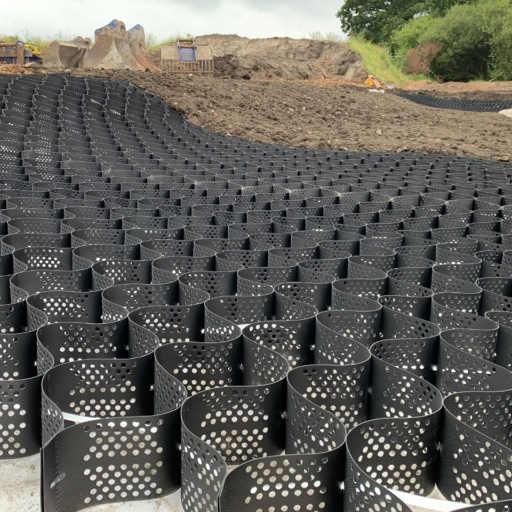
Common Challenges in Soil Stabilization
Soil stabilization faces numerous challenges that vary with geographical location, soil type, and environmental conditions. A major challenge is the wide variation in soil characteristics; various regions have diverse compositions of clay, silt, sand, and organic matter. Variability in such characteristics would, in turn, affect the selection of stabilization methods, which could be mechanical compaction or chemical additive application or even bio-stabilization.
Current evidence indicates that climate change is worsening soil instability due to the frequency of extreme weather phenomena, such as heavy rainfall, which cause soil erosion and lessen the soil’s load-bearing capacity. Soil erosion, according to the United Nations’ 2022 report, is resulting in the loss of almost 23 billion tons of fertile land annually, thus affecting infrastructure development and agriculture worldwide.
Another remaining concern is the cost and availability of materials that can stabilize soils effectively, such as lime, cement, or fly ash, especially in developing countries. Researchers are, therefore, increasingly leaning to sustainable approaches such as microbial-induced calcite precipitation (MICP), which uses bacteria to stabilize the soil. It has been demonstrated that this method provides a reduction in carbon emissions compared to conventional materials and also confers long-lasting stabilization effects.
To address these issues, however, is a task for advancement in technologies such as geotextiles, remote real-time geotechnical monitoring, and environmentally friendly additives. Continuous investment in research and development works accompanied by global collaboration will remain a key strategy in tackling the challenges and complexity involved in soil stabilization.
Opportunities for Growth in Geoweb Applications
The market for geoweb applications is expanding fast with the increasing use of geosynthetics for construction and infrastructure projects. According to the report by MarketsandMarkets, the market for geosynthetics is predicted to reach $22.3 billion by 2027, growing at a CAGR of 5.8% between 2022-2027. This expansion is spurred by the growing need for solutions sustainability for soil stabilization, erosion control, and load support, especially for large projects in road construction, railways, and mining operations.
Advancements in material science have also improved the longevity and applicability of geoweb systems. For instance, the objective of utilizing high-density polyethylene (HDPE) and advanced polymer blends in these applications has been to optimize performance in the most demanding environmental conditions. Smart technologies are also finding their way into modern geoweb systems; for example, sensor-enabled geotextiles provide real-time data concerning soil stresses, deformation, and structural integrity. These advancements assist the decision-making process and add value to the durability of construction projects.
Another big opportunity, albeit niche, is the application of geoweb systems in environmental conservation programs. Various examples of such programs include wetland restoration, riverbank stabilization, and green roof construction. Geoweb systems not only protect the soil from erosion but encourage vegetation growth as well, which is in consistency with global sustainability objectives and environmental regulations. Furthermore, an increased inclination toward green infrastructure has some governments and private stakeholders investing big money into geoweb applications, thus creating very profitable opportunities for corporate players involved in these endeavors.
All of these developments, however, point toward untapped potential for innovation and market growth, making geoweb applications the upstream factors for research, investment, and implementation.
Reference sources
1. NAMO Géoweb
- Authors: J. Chery, Marie Gradeler, Vincent Bonnal
- Published in: Revue internationale de géomatique (2022)
- Citation: (Chery et al., 2022)
- Summary: This paper discusses the development of a dedicated Geoweb platform named NAMO, aimed at valorizing and sharing information from various research projects. The platform utilizes open, free, and flexible functionalities, emphasizing two key aspects: narrative cartography and systemic modeling. It enhances the use of geographic information in collaborative and open science approaches.
- Methodology: The authors employed an agile and iterative design process to develop the platform, focusing on user engagement and the integration of diverse data sources.
2. Géoweb de narration et de modélisation : la plateforme NAMO GeoWeb
- Authors: Marie Gradeler, J. Chery
- Published in: Mappemonde (2022)
- Citation: (Gradeler & Chery, 2022)
- Summary: This article elaborates on the NAMO GeoWeb platform, highlighting its role in narrative mapping and modeling. It emphasizes the importance of participatory approaches in the development of geospatial tools that facilitate storytelling and knowledge sharing.
- Methodology: The study involved qualitative assessments of user interactions with the platform and the effectiveness of narrative techniques in conveying geographic information.
3. Evaluating the scalability of public participation in urban land use planning: A comparison of Geoweb methods with face-to-face meetings
- Authors: P. Jankowski et al.
- Published in: Environment and Planning B: Urban Analytics and City Science (2019)
- Citation: (Jankowski et al., 2019, pp. 511–533)
- Summary: This research evaluates the effectiveness of Geoweb methods for public participation in urban planning compared to traditional face-to-face meetings. The findings suggest that Geoweb methods can enhance participation scalability and inclusivity.
- Methodology: The study utilized a comparative analysis of case studies where both Geoweb and traditional methods were employed, assessing participation rates and qualitative feedback from participants.
Frequently Asked Questions (FAQs)
What are Geoweb® Geocells?
Geoweb® Geocells are three-dimensional, honeycomb-type structures made from high-density polyethylene, used for soil stabilization, erosion control, and load support.
How do the functions of Geocells operate?
They confine and stabilize the soil, distributing load evenly, and preventing erosion through the creation of a stable, interconnected system.
Where can Geocells be used?
Some applications include roadways, slopes, retaining walls, channels, and green roofs, with the Geocells acting as a versatile solution to a wide array of geotechnical issues.
What are the advantages of Geocells?
They help save on raw materials, distribute concern loads, prevent erosion, and also lend a hand toward sustainable development.
Are Geocells environmentally friendly?
Yes, in fact, it would lessen environmental degradation in the area since fewer resources are to be used for construction, along with plenty of vegetation growing to maintain natural stabilization.
What is the installation process for Geocells?
These systems are expanded from a compact package on the job site, anchored, and then filled with soil, aggregate, or concrete, depending on the application.
What kind of materials can be used for filling Geocells?
The fill can be soil, sand, aggregates, or concrete depending on the project specifications.
Are Geocells durable enough?
Manufactured from HDPE, these Geocells are UV-stabilized and resistant to most chemicals, thus ensuring long-term performance.

